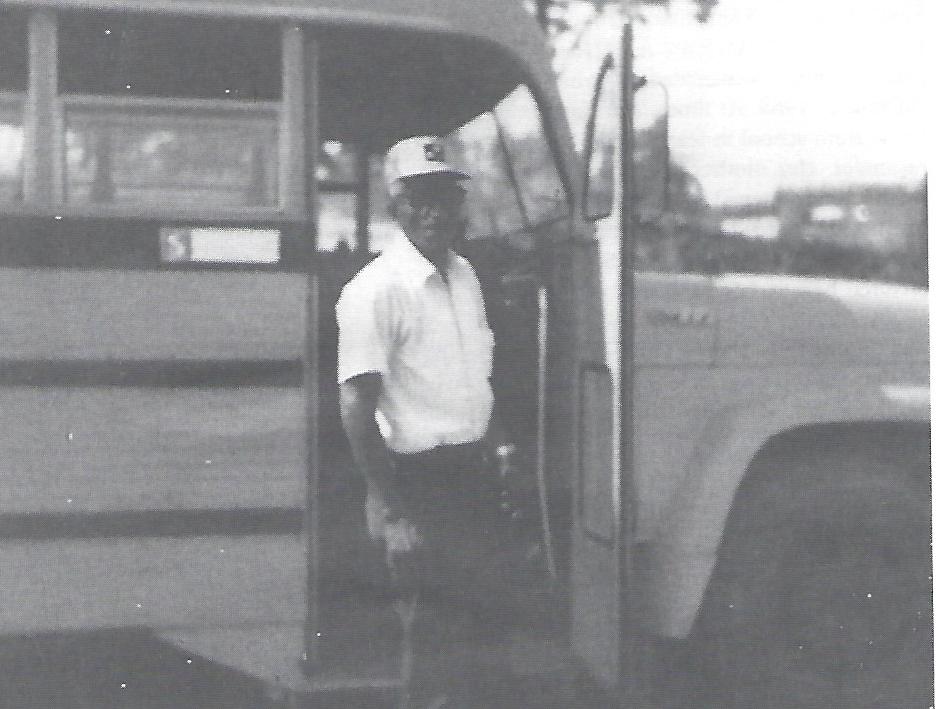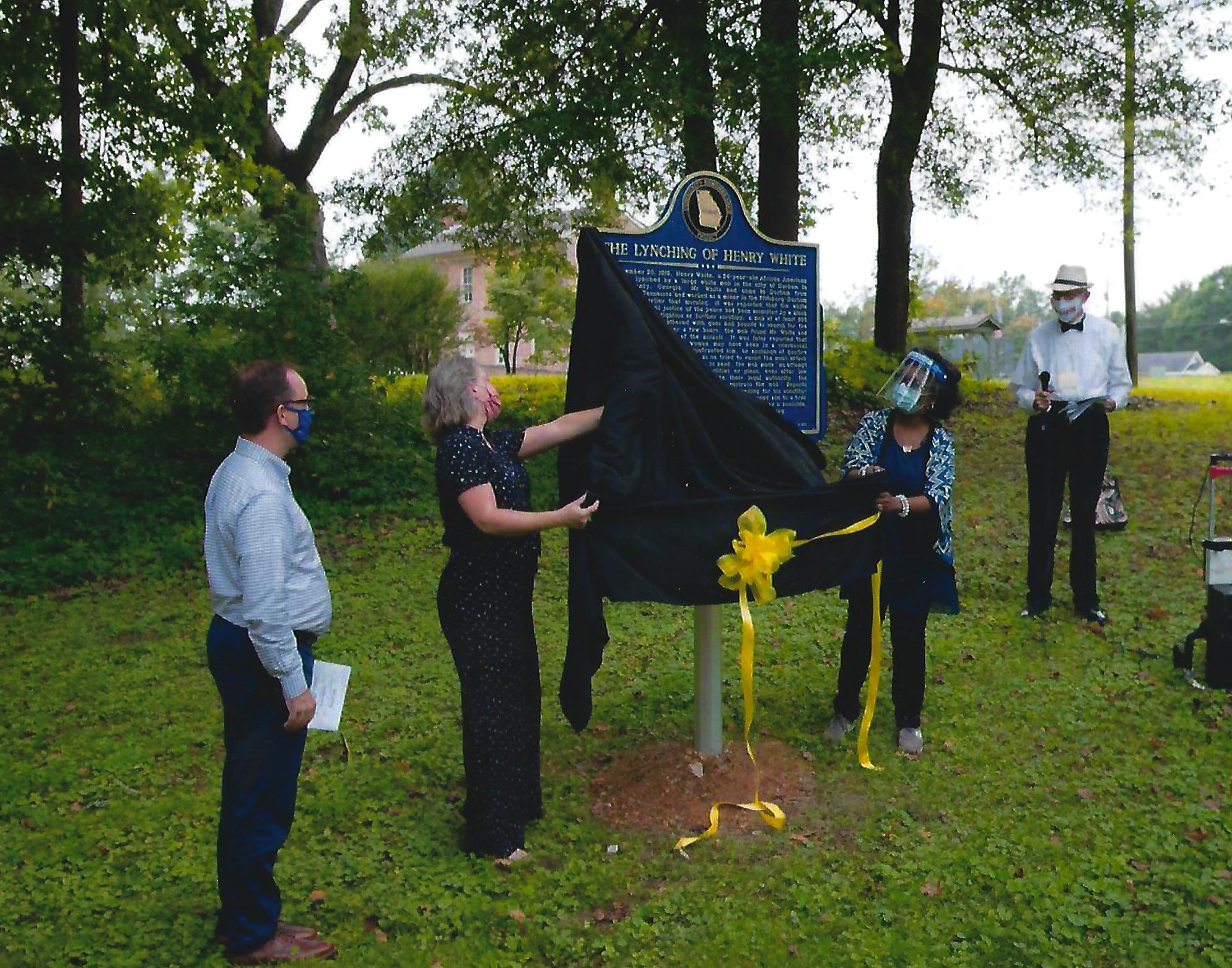Black history isn’t a separate part of American history—it’s interwoven into the American story. And it goes deeper than the pains of slavery and Jim Crow. And in a corner of northwest Georgia, one group is dedicated to preserving local history to remind people of that fact.
The Walker County African American Historical and Alumni Association, led by president and founder Beverly Foster, has spent the last 20 years preserving, publishing, and teaching about black life in Walker, Dade, Catoosa, and Chattooga Counties.
Foster’s story is one of dedication, perseverance, and a focus on reconciliation to keep black history alive.
Foster grew up in Walker County before moving to Atlanta, and now splits her time between them. “The Lord said, ‘You need to record the history of your people in this area,’” Foster said. “I had to return to my roots and record the story of African Americans in the area.”
Walker County touches the Tennessee border just south of Chattanooga and is 125 miles north of Atlanta. It is part of the Tennessee Valley geographically, culturally, and historically, said David Boyle, president of the Walker County Historical Society. Its mountainous terrain, immigration patterns, and dialect are more connected to Appalachia than the rest of Georgia. The area gets its local news from Chattanooga, not Atlanta, he noted.
Walker County had a larger population of African Americans in the past. Economic growth attracted black workers away to Atlanta and Chattanooga, while others left during the Great Migration and headed north to New York, Washington, DC, Chicago, Indiana, and Ohio. Today, the county is only 5-10 percent black.
Walker County is known for its Civil War history—it’s where the Confederacy won the Battle of Chickamauga in 1863. Its Cherokee history also runs deep, as northwest Georgia belonged to the Cherokee until U.S. troops expelled them in 1838 and relocated them to the Indian Territory (present-day Oklahoma). Northern Georgia was more inclined to Unionism during the Civil War (relative to other rural parts of the state) and its economy was less slave-based than other parts of Georgia, though slavery was by no means rare. As a result of those flashier events, the rest of its history tends to get overlooked.

To shed light on less-known events, Foster and the WCAAHAA have done a variety of activities to emphasize the area’s black history that includes:
- Publishing books on black Civil War soldiers and Reconstruction, Appalachian African Americans, and a recipe book
- Hosting a TV series (“Beverly’s Historical Moments”) on local black history
- Erecting a historical marker recognizing the lynching of a black man, Henry White, in 1916
- Preserving significant buildings connected to black history
- Running an annual Black History Month poster contest for students in Walker County Schools and awarding college scholarships
Their accomplishments don’t depend on big grants from national organizations. WCAAHAA members simply did what they thought was important. “We just went to work,” Foster said. “You can do a lot with five or six members. It took 20 years, but now they know me as ‘Beverly the history lady.’”
The group also works with the Walker County Historical Society when their interests overlap. For instance, When Walker County bought the Marsh House (a historic house built by an early settler, businessman, and slave owner), WCAAHAA made sure the tours and information would cover the black and Native American history connected to the house.
Much of black history education in the American education system focuses on slavery, Jim Crow, and the Civil Rights Movement. However, in addition to those milestones, Foster wants to highlight more modern history and local events.
“We will concentrate on the building of our schools that we have, the building of our churches, the building of our social life…we’re gonna concentrate on our accomplishments that we have done,” Foster said.

The Chickamauga Masonic Lodge No. 221, for example, was formed in 1916 and was the first to be listed on the National Register of Historic Places.* It served as a community hub for education, entertainment, socializing, and provided widow’s insurance, among other services.
When black history is only connected to enslavement or the fight for equal rights, students miss out on a deeper understanding of where they’re from. Churches, Masonic Lodges, and other local institutions were crucial for keeping communities connected even in the darkest of times. They offered economic, emotional, political, and cultural support. When they faded away, people were less connected.
Foster noticed this change in community connections as an “integration baby.” She attended a segregated elementary school before going to an integrated high school. At first, though, integration meant the best African American teachers would be sent to white schools—but not students. It was “upper-class integration,” and student integration was slower.
After desegregation, David Boyle said, fewer African Americans were administrators and leaders. They were only teachers, so black students had fewer role models outside the classroom after integration.
“Losing the segregated schools was a great loss to the African American communities of the county,” Foster said. “Meaning, we were separated from friends. Our parents no longer had control of PTA and activities of the school and felt less connected to the schools. Although, education-wise, it was great for the community, African Americans communities became disconnected.”

And integration was a slow process. Parts of rural south Georgia weren’t integrated until the 1970s. “Young people still think this was a long time ago,” Foster said, but she noticed hospital bathrooms still weren’t completely scrubbed of “negro-only” signs when she worked at an Atlanta-area hospital in the 1970s. The faded signs still lingered.

More painful parts of northwest Georgia’s history are approached with a certain delicacy in mind. The work of WCAAHAA has been focused on reconciliation. “We want our story told,” Foster said. “You don’t always need to be ugly in some people’s face to get things done. Education goes a long way, and honey goes a long way.” However, the work of building acceptance can be slow.
“I try to tell my younger people: Take the baby steps so you can jump off and take the big step,” Foster said. “You’ve got to promote these partnerships and acceptance. You’ve got to let people know that you’re not there to harm, but you are there to be a positive addition to the community.”
That approach has meant putting less emphasis on areas that have been ripe for conflict in other places, such as tearing down Confederate monuments.
“In downtown La Fayette, we have all the Confederate memorials. So we are now focusing on not—we do not believe in tearing down nothing,” Foster said. “I believe that those markers and memorials need to be there because—I’m proud to say that in Walker County, so far as I’ve seen, they’re in the proper places. They’re in memorial parks…they’re nowhere near the courthouse.”
“We are not asking to tear down nothing, we are asking, ‘Let us join you. let us have a memorial park and maybe let us have a museum.’ We’re working on some inclusive things,” Foster said.
But that can be difficult. “How do you tell a lynching story that’s upbeat? But we did. It’s all in how you tell the story,” Foster said. For example, they wrote about a sheriff who tried to stop the lynching of Henry White. For the marker unveiling, they invited black and white ministers and local leaders to come together “in a spirit of reconciliation.”

The lynching marker took about 3 years to erect and was spearheaded by a local student, Emma Jones, who visited the National Lynching Memorial in Montgomery, Alabama and noticed one happened in Walker County.
Without the existence of WCAAHAA, channeling her energy to do something to memorialize history would have been much harder. They set up a task force to figure out the best way to do it, then partnered with the Equal Justice Initiative and the Walker County Historical Society. Then they set about to educate the community on what happened.
“If it hadn’t been for Emma…who saw that reconciliation needed to be made in her community, then it would not have been done,” Foster said.

The pandemic has altered some plans for WCAAHAA, but didn’t necessarily slow the group down. “We got things to accomplish…and I’m not gonna let the devil stop this,” Foster said.
Local history is often overshadowed, but prioritizing it can bring people together and teach them a more complicated understanding of their neighborhood. The mountain stronghold of unionists in north Georgia, David Boyle said, were eventually overshadowed by Lost Cause sentiment and a dominant Southern culture. People didn’t remember as much of their history, or didn’t remember it accurately.
The work of groups like WCAAHAA could serve as a model for others interested in preserving local history. With the right approach, more people get interested and education leads to stronger civic bonds.
“It takes a while..and then people started saying ‘Ms. Foster, you been marching alone too long,’” Foster said. “After 20 years, now we got people with us.”
*Correction: An earlier version of this article misstated that the Chickamauga Masonic Lodge was one of two African American lodges in Georgia. It is one of two African American lodges on the Georgia Register of Historic Places.
Subscribe to The Patch, our newsletter, to stay up-to-date with new expatalachians articles and news from around Appalachia.
Anthony Hennen is managing editor of expatalachians and managing editor of the James G. Martin Center for Academic Renewal in Raleigh, North Carolina.


